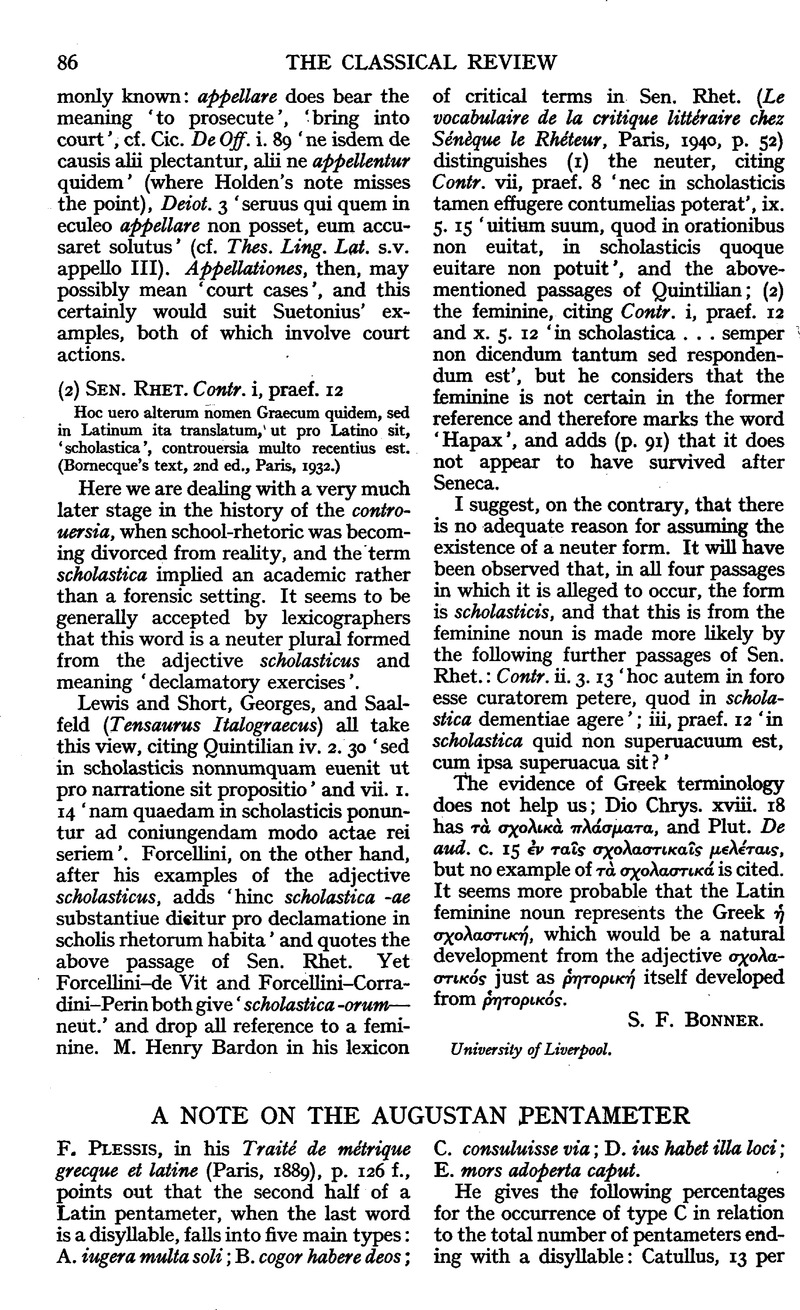No CrossRef data available.
Article contents
A Note on the Augustan Pentameter
Published online by Cambridge University Press: 27 October 2009
Abstract

- Type
- Review Article
- Information
- Copyright
- Copyright © The Classical Association 1947
References
1 The figure for the Heroides is 10–5 per cent.
2 In the Heroides, where the subject-matter is such as to invite the use of such names, the figure is 9 per cent. Four-syllable names with -que added are not included in these figures.
3 Tibullus is also much addicted to foursyllable words with -que added in this part of the pentameter. Such words are found in 337 per cent. of the pentameters of the type under consideration; corresponding figures are: Propertius, 3–6 per cent.; Ovid, Amores, 17–8 per cent.; Tristia, 32–2 per cent, (figures include the few words with -ve added).
4 It should be said that in pentameter endings of Plessis's type E (mars adoperta caput), for which Tibullus shows no particular predilection, the proportion of perfect infinitives is also high. The figure, 28 per cent., is, however, noticeably lower than that for type C.


